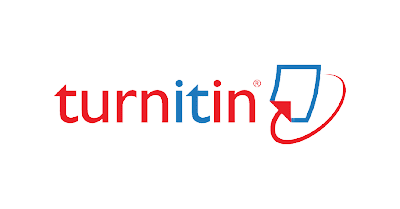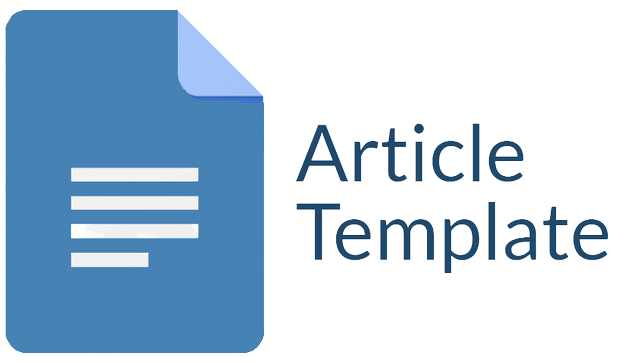ANALISIS KEBUTUHAN PENGEMBANGAN E-LEARNING FISIKA UNTUK MENINGKATKAN PEMAHAMAN KONSEP DAN MINAT BELAJAR SISWA
Abstract
The independent curriculum was developed as a more flexible curriculum framework, centered on basic material and developing students' uniqueness and abilities. One way that can be used to develop students' abilities is through learning media that is in accordance with student characteristics. This study aims to analyze students' interest in using learning media in the form of e-learning in physics learning. The research methodology used is a qualitative method using data collection techniques through teacher interviews and student response questionnaires. The objects of the study were several high schools in North Sumatra and Pekanbaru and a sample of 81 students. Based on the results of the student response questionnaire, 92.6% of students were interested in learning using e-learning, and 100% of students already had cellphones so that they supported the development of E-learning learning media. E-learning is one of the innovations in the field of education in the form of a learning system carried out through electronic media, such as computers, tablets, or smartphones that can be accessed without time and distance limits.
Downloads
References
Almarzooq, Z. I., Lopes, M., & Kochar, A. (2020). Virtual Learning During the COVID-19 Pandemic: A Disruptive Technology in Graduate Medical Education. Journal of the American College of Cardiology, 75(20), 2635–2638. https://doi.org/10.1016/j.jacc.2020.04.015
Ariandini, N., & Hidayati, A. (2023). Pembelajaran Adaptif dalam Kurikulum Merdeka: Integrasi Teori Behavioristik, Kognitif, dan Konstruktivis dalam Teknologi Pendidikan. Jurnal Kependidikan Media, 12(3), 158–164.
Barokah, A., Sugianto, S., & Astuti, B. (2021). Analisis Perencanaan Pengembangan Instrumen Evaluasi Berbasis Higher Order Thinking Skills (Hots) Materi Hukum Termodinamika. Phenomenon : Jurnal Pendidikan MIPA, 11(1), 75–86. https://doi.org/10.21580/phen.2021.11.1.7303
Carmi, G. (2024). E-Learning using zoom: A study of students’ attitude and learning effectiveness in higher education. Heliyon, 10(11), e30229. https://doi.org/10.1016/j.heliyon.2024.e30229
Chen, H. (2024). Application of E-learning entertainment learning based on intelligent interactive experience in English reading assistance mode. Entertainment Computing, 52.
Khoirurrijal, D. (2016). Pengembangann Kurikulum Merdeka. CV. Literasi Nusantara Abadi.
Latuheru, J. D. (1988). Media Pembelajaran Dalam Proses Belajar-Mengajar Masa Kini. Jakarta: Departemen Pendidikan dan Kebudayaan.
Lim, C., Martin, Adnyana, M. A., Achmad, S., & Sutoyo, R. (2023). Online Learning Platform Analysis During COVID- 19 Pandemic in Indonesia. Procedia Computer Science, 227, 606–613. https://doi.org/10.1016/j.procs.2023.10.564
Maharani, A., & Fuadiyah, S. (2024). Validitas Modul Ajar Virus Berbasis Problem Based Learning. Edusaintek: Jurnal Pendidikan, Sains Dan Teknologi, 11(4), 2058–2075. https://doi.org/https://doi.org/10.47668/edusaintek.v11i4.1263
Mohammed Albanyan, A. (2024). The quality of distance learning during COVID-19: Perspectives of Saudi university students. Heliyon, 10(13), e33731. https://doi.org/10.1016/j.heliyon.2024.e33731
Nafi’ah, J., Faruq, D. J., & Mutmainah, S. (2023). Karakteristik Pembelajaran Pada Kurikulum Merdeka Belajar Di Madrasah Ibtidaiyah. Jurnal Prodi Pendidikan Guru Madrasah Ibtidaiyah, Mi, 5–24.
O’Connor, S., Wang, Y., Cooke, S., Ali, A., Kennedy, S., Lee, J. J., & Booth, R. G. (2023). Designing and delivering digital learning (e-Learning) interventions in nursing and midwifery education: A systematic review of theories. Nurse Education in Practice, 69(April), 103635. https://doi.org/10.1016/j.nepr.2023.103635
Ofem, U. J., Idika, D., Otu, B., Victor Ovat, S., Arikpo, M. I., Anakwue, A. L., Akpo, C., Anake, P. M., Ayin, N. N., Edam-Agbor, I. B., Orim, F. S., Eunice Ngozi, A., Anyiopi, R. U., Nwinyinya, E., & Ibok, E. E. (2024). Academic optimism, capital indicators as predictors of cognitive, affective, and psychomotor learning outcome among students in secondary school. Hierarchical regression approach (HRA). Heliyon, 10(9), e30773. https://doi.org/10.1016/j.heliyon.2024.e30773
Pals, F. F. B., Tolboom, J. L. J., & Suhre, C. J. M. (2023). Development of a formative assessment instrument to determine students’ need for corrective actions in physics: Identifying students’ functional level of understanding. Thinking Skills and Creativity, 50(August), 101387. https://doi.org/10.1016/j.tsc.2023.101387
Rahmawati, R., & Hidayat, R. (2024). Implementation of the Merdeka Curriculum to Improve Learning Outcomes in Vocational High Schools (SMK). Journal of Industrial Engineering & Management Research, 5(2), 1–8.
Setiaji, B., & Dinata, P. A. C. (2020). Analisis kesiapan mahasiswa jurusan pendidikan fisika menggunakan e-learning dalam situasi pandemi Covid-19. Jurnal Inovasi Pendidikan IPA, 6(1), 59–70.
Simatupang, Y. S., Rahmad, M., Sahal, M., & Dewi, A. S. (2023). Wawasan Akademik Teknologi Universitas Riau , Indonesia SMK Labor Pekanbaru , Indonesia Edusaintek : Jurnal Pendidikan , Sains dan Teknologi Vol . 10 ( 2 ) 2023 | 426 PENDAHULUAN Literasi menurut Herliani et al ., ( 2021 ) merupakan suatu bagian dari pros. 10(2), 426–438.
Sobri, M., Liani, A., Zuwiranti, A., Myati, T., & Nur Widiyati, R. (2023). Penerapan Kurikulum Merdeka Sd/Mi Di Indonesia. Journey: Journal of Development and Reseacrh in Education, 3(2), 26–34.
Timothy, T. (2021). Initial teacher training for twenty-first century skills in the Fourth Industrial Revolution (IR 4.0): A scoping review. Computers and Education, 170(1).
Yusri, Y., & Samsuri, S. (2014). Peningkatan Hasil Belajar Ips Melalui Model Konstruktivistik Berbantuan Media Pembelajaran. Harmoni Sosial: Jurnal Pendidikan IPS, 1(2), 231–241. https://doi.org/10.21831/hsjpi.v1i2.2443
Copyright (c) 2024 Juli Pratiwi, M. Rahmad, Syahril Syahril

This work is licensed under a Creative Commons Attribution-ShareAlike 4.0 International License.
Jurnal allows anyone to compose, correct, and do derivative works, even for commercial purposes, as long as they credit for the original work. This license is the freest. It is recommended for maximum distribution and use of licensed material.
The submitted paper is assumed not to contain any proprietary materials that are not protected by patent rights or patent applications; The responsibility for technical content and protection of proprietary materials rests with the authors and their organizations and not the responsibility of journal or its editorial staff. The primary (first/appropriate) author is responsible for ensuring that the article has been viewed and approved by all other authors. The author's responsibility is to obtain all necessary copyright waivers to use any copyrighted material in the manuscript before submission.
Jurnal Pendidikan, Sains dan Teknologi allows the author(s) to hold the copyright without restrictions and allow the author(s) to retain publishing rights without restrictions. Jurnal Pendidikan, Sains dan Teknologi CC-BY-SA or an equivalent license as the optimal license for the publication, distribution, use, and reuse of scholarly work. Jurnal Pendidikan, Sains dan Teknologi allows the author(s) to hold the copyright without restrictions and allow the author(s) to retain publishing rights without restrictions. Jurnal Pendidikan, Sains dan Teknologi CC-BY-SA or an equivalent license as the optimal license for the publication, distribution, use, and reuse of scholarly work.
In developing strategy and setting priorities Jurnal Pendidikan, Sains dan Teknologi recognize that free access is better than priced access, libre access is better than free access, and libre under CC-BY-SA or the equivalent is better than libre under more restrictive open licenses. We should achieve what we can when we can. We should not delay achieving free in order to achieve libre, and we should not stop with free when we can achieve libre.
Jurnal Pendidikan, Sains dan Teknologi is licensed under a Creative Commons Attribution-ShareAlike 4.0 International License.
You are free to:
- Share a copy and redistribute the material in any medium or format
- Adapt a remix, transform, and build upon the material for any purpose, even commercially.
- The licensor cannot revoke these freedoms as long as you follow the license terms.






